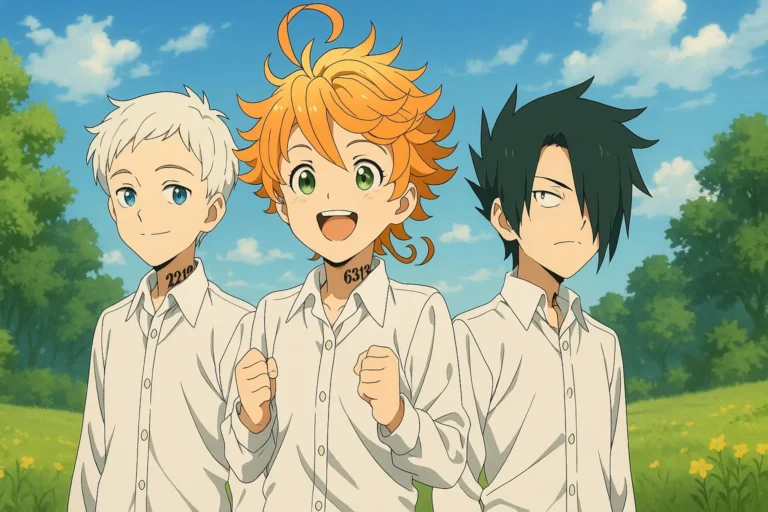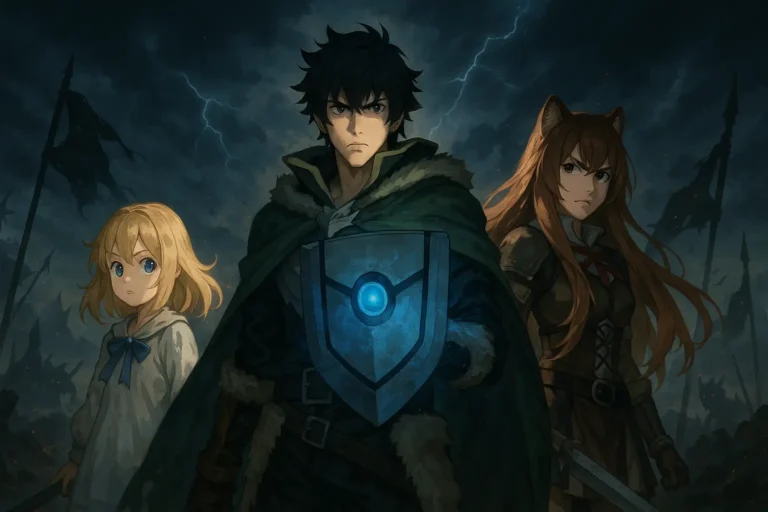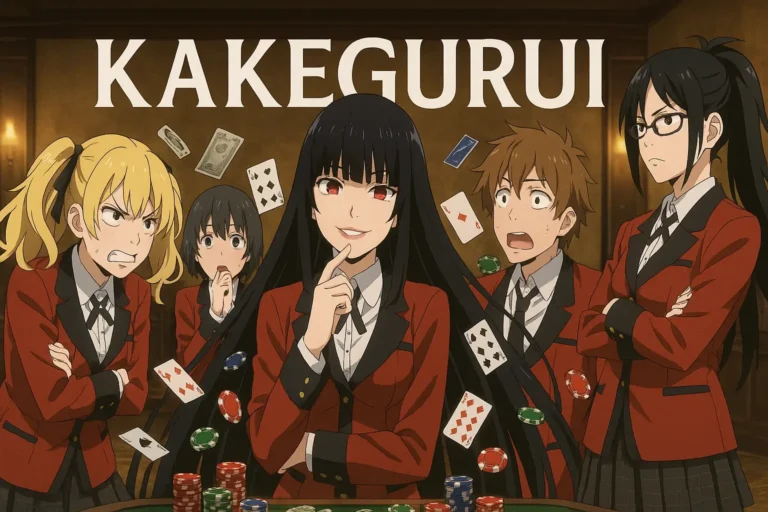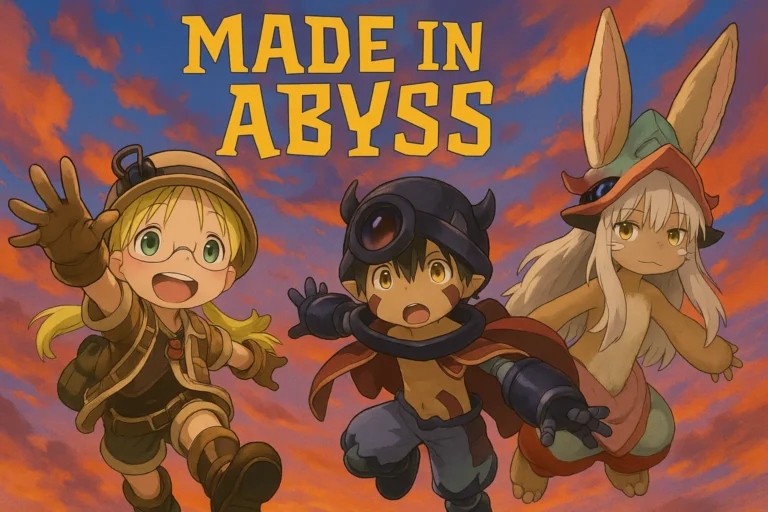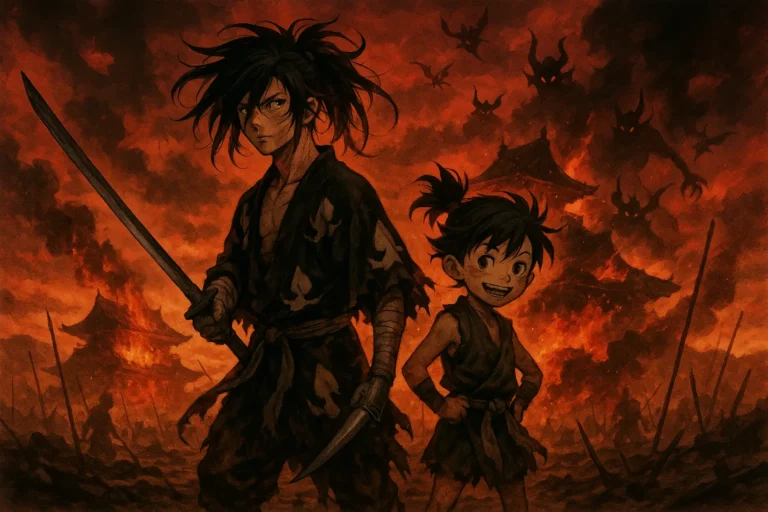Banana Fish: A Haunting Symphony of Crime, Loss and Redemption
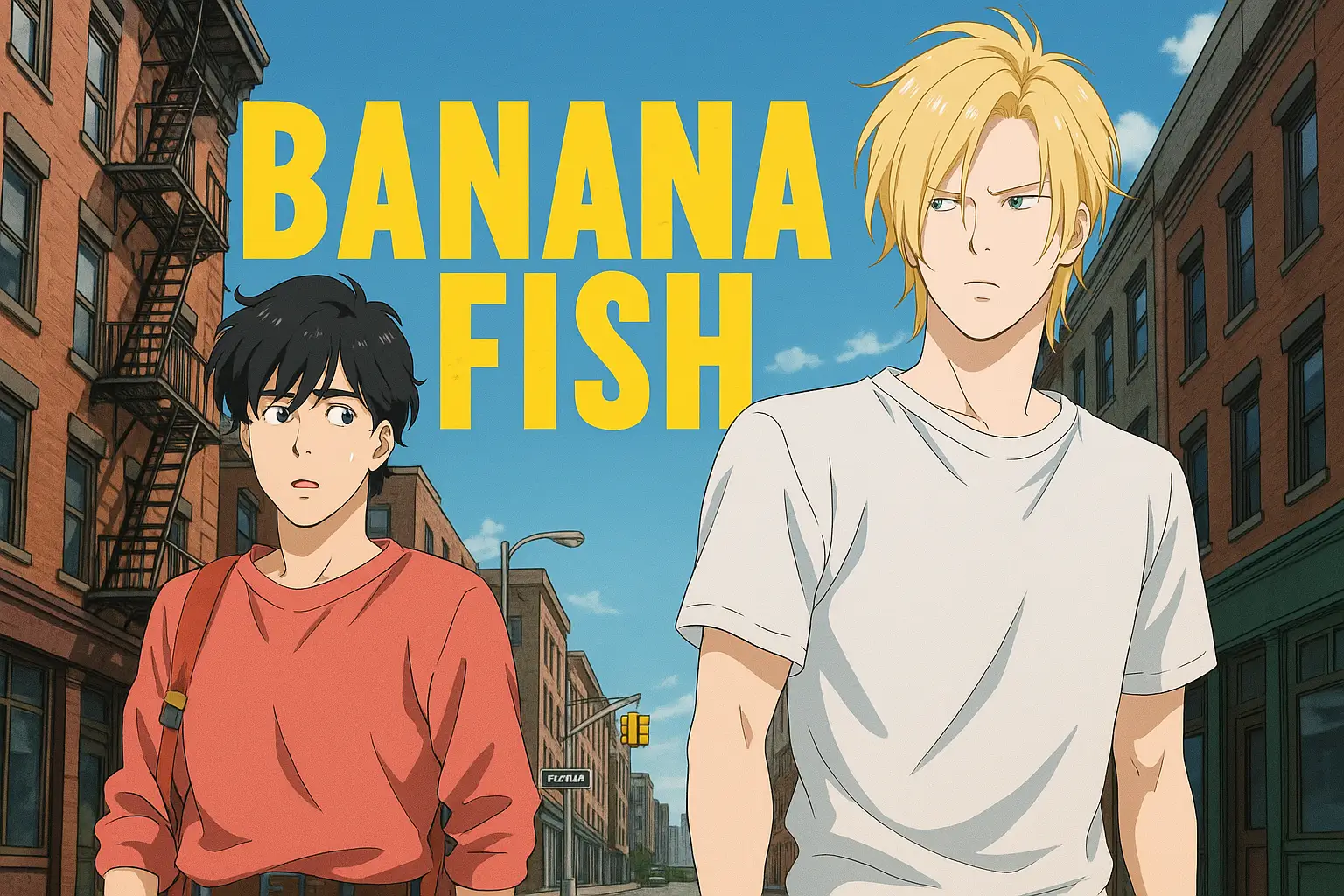
Table of Contents
Story Overview
In the gritty underbelly of 1980s New York, 17-year-old gang leader Ash Lynx commands respect and fear in equal measure. His life of crime under the control of powerful mafia boss Dino Golzine takes a dramatic turn when he encounters a mysterious drug called “Banana Fish” and meets Eiji Okumura, a kind-hearted Japanese photographer’s assistant. As bodies pile up and dark conspiracies emerge, Ash finds himself entangled in a deadly web that connects to his own traumatic past. The arrival of Eiji—someone untainted by the darkness of Ash’s world—offers a glimpse of something the young gang leader has never known: genuine connection. Together, they navigate a treacherous landscape of corruption, betrayal, and violence while uncovering the sinister truth behind Banana Fish and the powerful figures willing to kill to protect its secrets. Their journey becomes a race against powers that stretch from New York’s crime syndicates to the highest echelons of American politics.
Quick Facts
| Category | Details |
|---|---|
| Genre | Action, Crime, Drama, Psychological, Thriller |
| Episodes | 24 |
| Episode Duration | 22 minutes |
| Age Rating | R – 17+ (Violence & Profanity) |
| Production | MAPPA (2018) |
| Source | Manga by Akimi Yoshida |
| Available On | Amazon Prime Video |
Content Advisory (CAT)
Violence: HIGH – Contains frequent graphic gun violence, hand-to-hand combat, torture scenes, and implied sexual assault. Multiple scenes depict blood and serious injuries. The violence is integral to the plot rather than gratuitous but remains intense throughout.
Language: MEDIUM – Regular use of profanity including frequent use of f-bombs and other strong language, consistent with the criminal underworld setting. The language is contextually appropriate but prevalent.
Sexual Content: MEDIUM – No explicit sexual scenes, but multiple references to sexual abuse and trafficking of minors. Contains implied sexual violence in backstories and as plot elements. These elements are handled with sensitivity rather than exploitation, but remain disturbing.
Sensitive Themes: Child abuse, sexual exploitation, drug addiction, suicide, rape, PTSD, organized crime, political corruption, homophobia, and human trafficking. The series addresses these issues with maturity but does not shy away from their disturbing reality.
Keywords: crime thriller, psychological drama, trauma narrative, urban noir, character study, MAPPA animation, 1980s New York
Deep Insight
Banana Fish transcends its crime-thriller veneer to become a profound meditation on trauma, freedom, and the healing power of human connection. Through Ash’s journey, we witness how childhood wounds shape destinies and how societal structures can trap individuals in cycles of violence. The series delicately explores how even brief encounters with genuine love can illuminate the darkest souls, offering redemption not through escape but through acceptance. Like a modern Greek tragedy set against concrete skyscrapers, it questions whether those born into darkness can ever truly step into the light, or if some fates are written in permanent ink. Beyond its action sequences lies a poetic exploration of what it means to be truly alive versus merely surviving.
Standout Elements
Masterclass in Character Development
Ash Lynx’s evolution throughout the series represents some of the finest character writing in anime. His complexity unfolds like a carefully constructed origami—beautiful in its precision yet harboring sharp edges. The series takes time to peel back his layers, revealing how his genius intellect, combat prowess, and emotional barriers all stem from profound trauma, creating a protagonist who’s simultaneously vulnerable and formidable.
Visual Storytelling Excellence
MAPPA Studio captures both the sleek opulence of Manhattan penthouses and the gritty reality of back-alley violence with equal artistry. The animation excels particularly in fight choreography, where movements feel weighted and consequential. The cinematography employs color psychology brilliantly—cold blues for Ash’s world juxtaposed against the warmer tones that emerge whenever Eiji enters the frame.
Nuanced Cultural Contrast
The intersection of American and Japanese perspectives creates fascinating narrative tension. Eiji’s cultural lens provides both the audience and Ash with an alternative viewpoint on violence, loyalty, and connection. This cultural dialogue adds depth to exchanges that might otherwise be standard crime drama fare, elevating the storytelling beyond typical genre conventions.
Emotional Resonance
Few anime manage to create such genuine emotional investment in its characters’ fates. The relationship between Ash and Eiji defies simple categorization—it’s neither traditional friendship nor simply romantic, but something transcendent that asks viewers to reconsider how we define meaningful human connections. Their bond becomes the emotional anchor in a storyline filled with brutality and betrayal.
Unflinching Social Commentary
The series bravely addresses traumatic themes including child abuse, exploitation, and institutional corruption without sensationalism. It examines how power structures perpetuate cycles of violence and how socioeconomic factors determine who becomes predator versus prey. This social consciousness elevates the narrative beyond entertainment to thought-provoking commentary.
Drawbacks
Potentially Overwhelming Darkness
The relentless intensity and traumatic content can be exhausting for viewers. The series rarely offers respite from its heavy themes, making it difficult to digest in large viewing sessions. Some viewers may find the constant tension emotionally draining, with few lighthearted moments to provide balance.
Pacing Issues Mid-Series
Several episodes in the middle arc suffer from pacing problems, with some plot points feeling unnecessarily stretched while others seem rushed. The narrative momentum occasionally stalls during the cross-country journey segments, temporarily diminishing the tight storytelling that characterizes the beginning and end of the series.
Cultural Translations Sometimes Miss
Certain nuances of American gang culture and politics from the original 1980s manga setting feel awkwardly transplanted to the updated 2018 timeline. This occasional dissonance can create moments that strain credibility for viewers familiar with either the original work or the realities of modern American society.
Recommended For
Banana Fish is perfect for viewers who appreciate psychologically complex character studies that don’t shy away from difficult subject matter. Fans of crime dramas like “The Wire” or “Breaking Bad” will find similar narrative depth here. Those who enjoy stories exploring the gray areas of morality and human resilience will be particularly captivated by Ash’s journey. Viewers who appreciate animation that treats mature themes with sophistication rather than sensationalism will find this series refreshingly thoughtful. Anyone interested in exploring how trauma shapes individuals and how connection can offer redemption will find the series deeply rewarding.
This anime is less suitable for viewers sensitive to graphic violence or traumatic themes, those looking for lighthearted entertainment, or viewers who prefer resolution-per-episode storytelling rather than long-form narrative arcs.
Final Rating: 8/10
Banana Fish earns its exceptional rating through its masterful integration of compelling character work, sophisticated storytelling, and visual excellence. Few anime manage to blend action-thriller elements with such profound emotional resonance and psychological depth. Despite its occasional pacing issues and relentless intensity, the series delivers an unforgettable viewing experience that remains with you long after the final episode. Banana Fish isn’t just great anime—it’s great storytelling in any medium.
Frequently Asked Questions
Is Banana Fish based on a true story?
No, Banana Fish is fictional, though it draws inspiration from real issues like drug trafficking, political corruption, and gang violence in America. The original manga by Akimi Yoshida ran from 1985 to 1994 and was heavily influenced by American crime novels and films of that era.
Is there romance between Ash and Eiji?
The relationship between Ash and Eiji is intentionally portrayed with beautiful ambiguity. While there are no explicitly romantic scenes, their connection transcends traditional friendship boundaries. The creator has described their relationship as a “soul connection” that viewers can interpret through their own lens.
How closely does the anime follow the original manga?
The anime remains largely faithful to the manga’s core narrative and themes, though it updates the setting from the 1980s to 2018. Some story arcs are condensed, and certain cultural references are modernized, but the essential character journeys and major plot points remain intact.
How violent is Banana Fish actually?
Very. The series contains numerous scenes of gunfights, physical assault, implied sexual violence, and psychological torture. The violence serves narrative purposes rather than gratuitous shock value, but viewers should be prepared for graphic content throughout all 24 episodes.
Is there a second season of Banana Fish?
No. Banana Fish tells a complete story within its 24 episodes. The narrative reaches a definitive conclusion that aligns with the original manga’s ending, and no continuation has been produced or announced.

